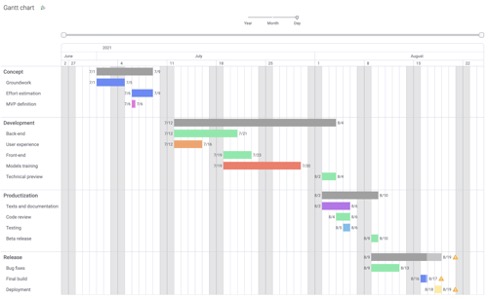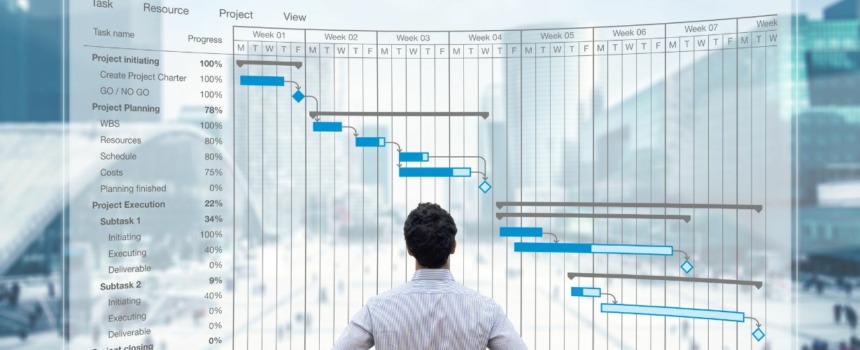Understanding the basics and detailed components of a project can often be challenging without a visual aid. This is where a Gantt chart comes into play. But what exactly is a Gantt chart, and what information can it provide to project managers and stakeholders? Keep reading to discover the intricacies of this valuable tool.
Defining a Gantt Chart and its Purpose
The Gantt chart is a type of bar chart developed by Henry Gantt, which aids project managers in scheduling, managing, and monitoring specific tasks in a project. The key aim of a Gantt chart is to provide an illustration of a project schedule by breaking project activities down into manageable chunks of work.
By examining a Gantt chart example, you can see that this visualization makes it easy for team members to understand their individual responsibilities and deadlines within a larger project timeline. Procuring an in-depth understanding of task allocation can significantly contribute to the successful execution of a project.
Demystifying a Gantt chart’s purpose is essential in order to accentuate its significance in enforcing structured project management. Its universal use across diverse industry sectors is a testament to its functional versatility and indispensable nature.
Fundamental Elements of a Gantt Chart

A Gantt chart is comprised of several fundamental elements that contribute to its functionality and effectiveness. The tasks or activities of a project form the key component of such a chart. They depict the various steps needed to complete the project and are generally presented in a structured sequence.
Each task is represented by a bar; the position and length of the bar reflect the start date, duration, and end date of the task. This visual representation aids in a better understanding of project tasks and their timelines.
Milestones are another crucial element of a Gantt chart. They signify critical events or key stages in a project, allowing teams to keep track of significant moments throughout the project timeline.
Lastly, dependencies are indicated in a Gantt chart. Dependencies illustrate the relationship between tasks, demonstrating how one task affects others. Understanding these fundamental elements is critical for gaining a holistic overview of a project’s timeframe and workflow.
The Role of Timeline in Gantt Charts
The timeline serves as the backbone of a Gantt chart. It provides a chronological framework for the project, allowing team members and project managers to visualize the start and end dates of individual tasks and the project as a whole. This aids in setting realistic timelines and adequately managing resources, thereby upping the project success ratio.
Through this sequential representation of project tasks, the progress of the project can be tracked in a real-time manner. It allows project managers to compare planned versus actual progress and make necessary adjustments to keep the project on track.
In complex projects, timelines can also include smaller time blocks for each task, enabling more granular tracking and better resource allocation. Such detailed information is crucial for ensuring active management of tasks and efficient use of resources.
Moreover, a clear timeline enables all stakeholders to have a shared understanding of the project progression. It promotes accountability, facilitates coordination, and ultimately contributes to the project’s success.
Advantages of Implementing Gantt Charts for Project Management

Implementing Gantt charts for project management comes with a myriad of advantages. They provide a clear visualization of the project timeline, aiding in better planning and management of tasks.
With Gantt charts, project managers can effectively showcase task relationships and dependencies, facilitating the necessary adjustments to the project timeline. This helps in mitigating risks associated with project delays and miscommunication.
Moreover, Gantt charts contribute significantly to transparency and accountability. They enable team members to understand their responsibilities and managers to monitor work progress, making them an essential element of effective project management. Gantt charts can increase team collaboration and contribute to employee satisfaction.
Overall, Gantt charts serve as a comprehensive project management tool, providing critical insight into task allocation, dependencies, and overall project timeline. By understanding and leveraging the information a Gantt chart provides, project managers can achieve better project coordination, efficient workflow, and successful project completion.





Comments